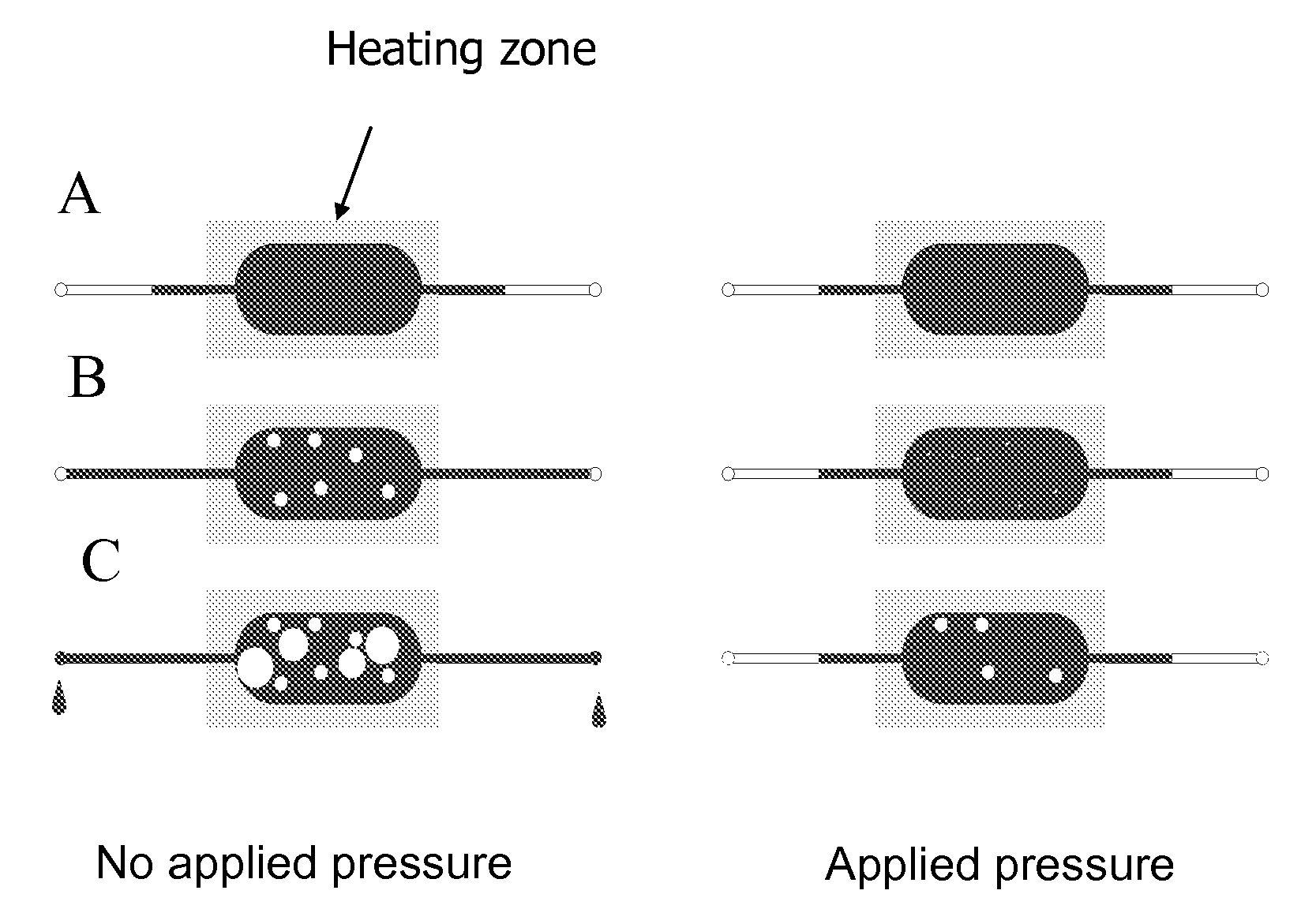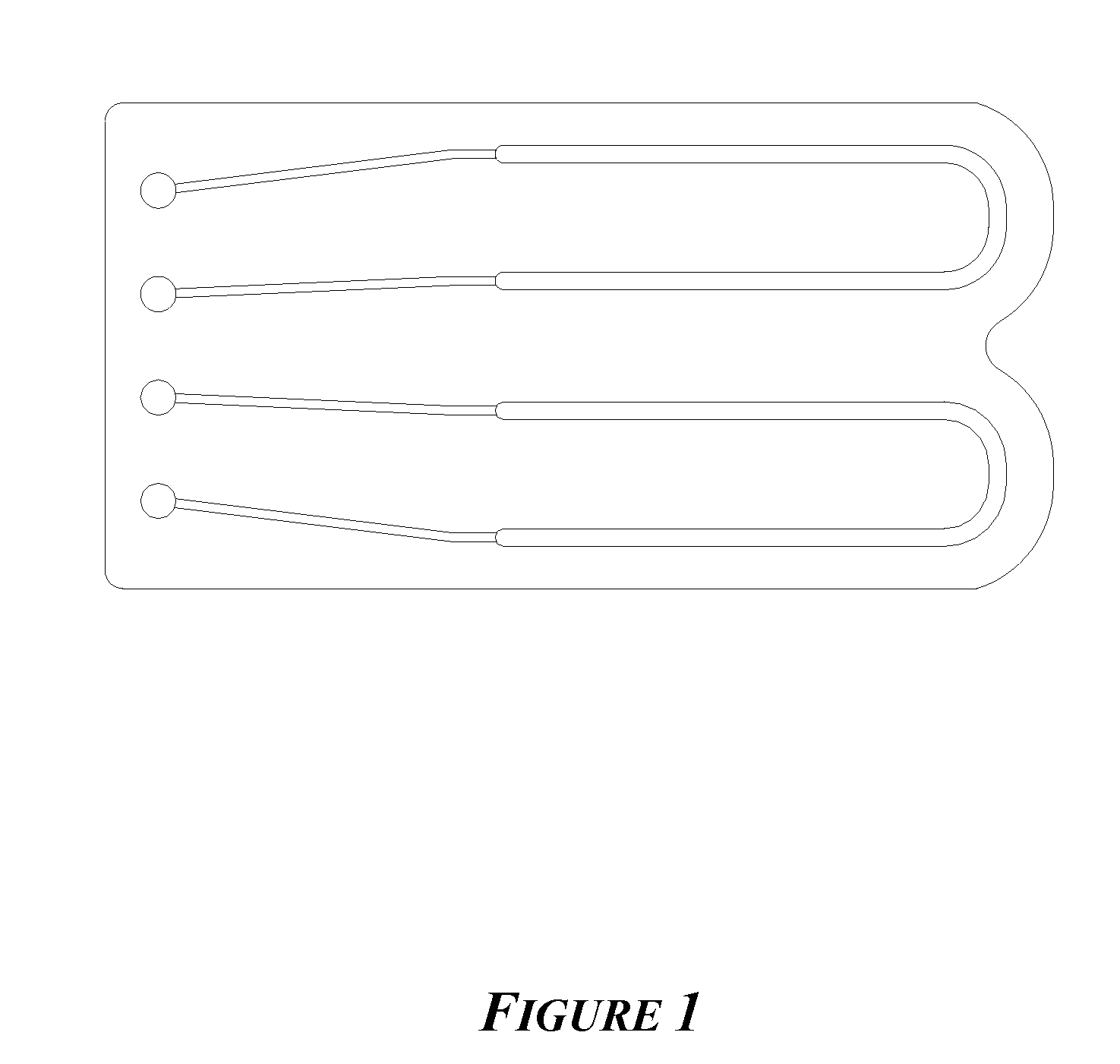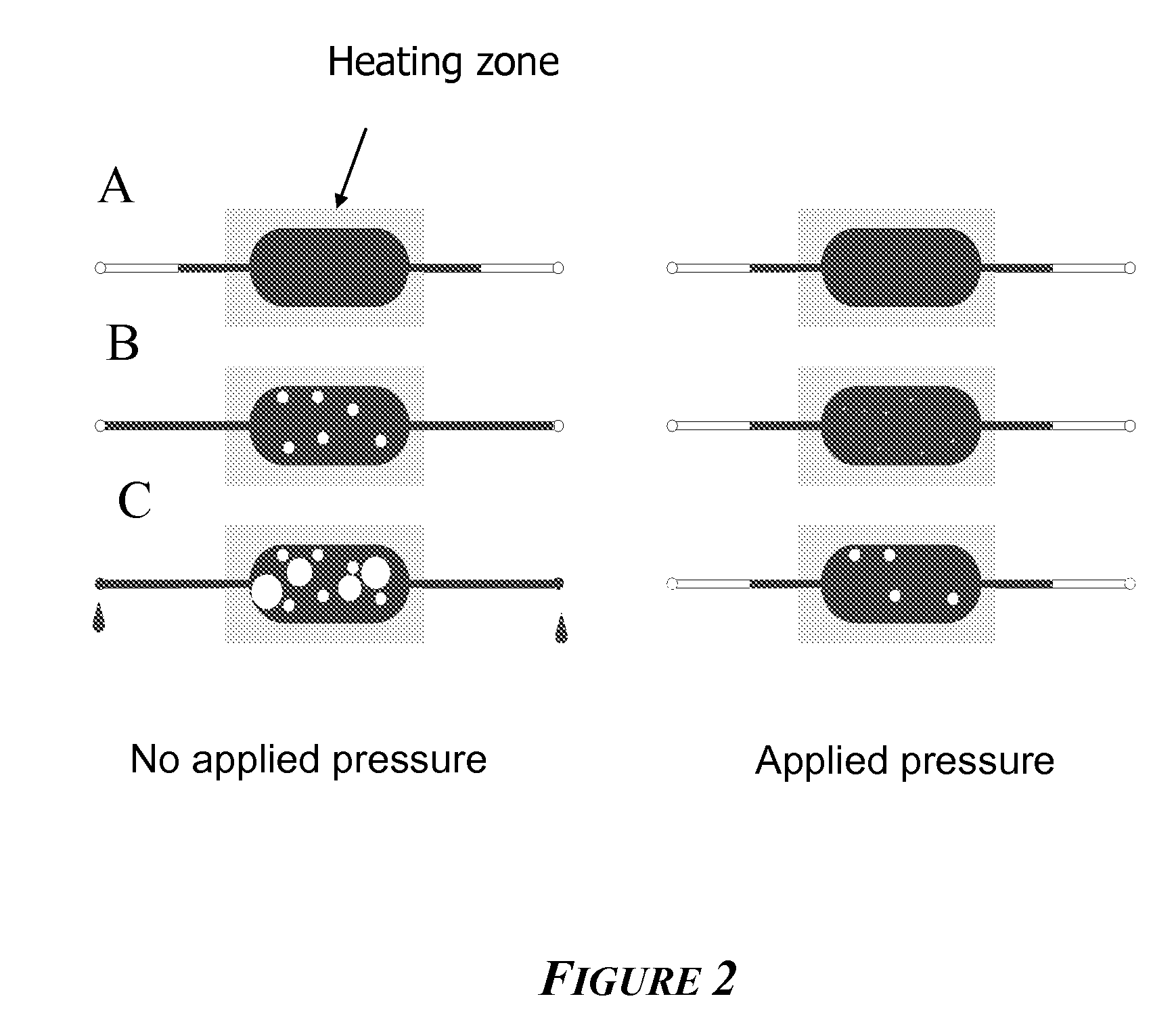Devices and Methods for the Performance of Miniaturized In Vitro Assays
- Summary
- Abstract
- Description
- Claims
- Application Information
AI Technical Summary
Benefits of technology
Problems solved by technology
Method used
Image
Examples
example 1
[0113]Evaporation control using localized heating and filled, narrow channels that terminate at lower temperatures was determined as follows.
[0114]Numerous PCR and Sanger cycling reactions were performed using the device as shown in FIG. 1. These devices contained 5 μL samples and were clamped to a pressure source through O-rings at the ports shown (left). Prior to clamping, the chips were completely filled to the ports with fluid. The chip was then placed on a flat-topped thermal cycler with primarily the narrow loading channels hanging over the edge of the plate, i.e., in air. A pressure of 50 psig N2 was applied. The chips were then subjected to the following PCR or Sanger sequencing profiles:
PCR profile:1. T = 96° C.2 minutes (denaturation)2. T = 95° C.35sec3. T = 66.7° C.1min 15 s4. repeat 2-328times5. 70° C.2min
Sanger profile:1. T = 95° C.25seconds2. T = 50° C.10seconds3. T = 60° C.1minute4. repeat 1-328times
The channel dimension leading to the large diameter U was 125 μm×250 ...
example 2
[0116]A second example of localized heating and filled, narrow channels permitting easy parallelization is exemplified by a 3-dimensional microchip, in which fluids are added via channels beneath the top surface, as illustrated in FIG. 4. The liquid then passes down to the bottom of the chip, where it fills a chamber. Localized heat is applied at this bottom surface (Peltier), and the filling channels are emptied so that the liquid is confined to the reaction chamber on the bottom, the connecting channels, and the two long, deep holes leading from the top to the bottom. As a result, a large temperature gradient can be provided from the top of the channel to the bottom, leaving two columns of liquid analogous to the fill / empty channels detailed above. When a reaction volume is near a Peltier surface as shown in FIG. 4, fluids are brought from above the surface through narrow channels. While the reaction chamber reaches 95-97° C. required for PCR, the chip top exceeds 75° C. only duri...
example 3
[0120]Microchips constructed in the form shown in FIG. 4 were used to perform PCR reactions. A sample containing 1.5 μL of E. coli DH5 transformed with pGEM (˜5×106 cells / μL) was mixed with 1.5 μL PCR reaction mix containing SpeedSTAR™ polymerase (Takara Bio USA) and primer concentration 0.1 μM and introduced into a device as illustrated in FIG. 4. The mixture was cycled on the Peltier surface under applied pressure of 30 psig N2 with the following parameters: Initial denaturation 96° C. for 3 min (in order to lyse the bacteria and release DNA), then 40 cycles with 96° C. for 20 sec, 65° C. for 15 sec and 72° C. for 45 sec. FIG. 6 shows a gel illustrating a 1.8 kb product retrieved from PCR of the 3 μL sample. The reaction mix showed ˜15% evaporation.
PUM
| Property | Measurement | Unit |
|---|---|---|
| Temperature | aaaaa | aaaaa |
| Pressure | aaaaa | aaaaa |
| Pressure | aaaaa | aaaaa |
Abstract
Description
Claims
Application Information
 Login to View More
Login to View More - R&D
- Intellectual Property
- Life Sciences
- Materials
- Tech Scout
- Unparalleled Data Quality
- Higher Quality Content
- 60% Fewer Hallucinations
Browse by: Latest US Patents, China's latest patents, Technical Efficacy Thesaurus, Application Domain, Technology Topic, Popular Technical Reports.
© 2025 PatSnap. All rights reserved.Legal|Privacy policy|Modern Slavery Act Transparency Statement|Sitemap|About US| Contact US: help@patsnap.com



